
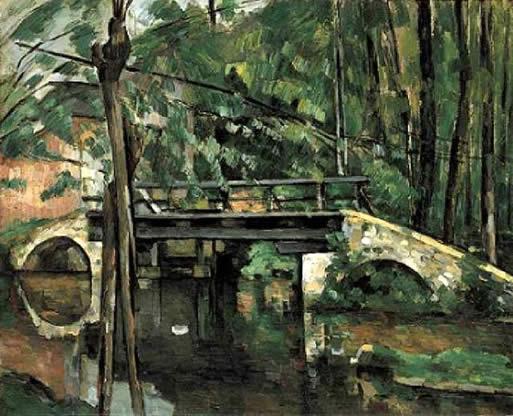
Starting in 1880, Paul Cezanne is persuaded that the immediate view of the world is the bearer of absolute truth.
Provided he has found the "right formula", Paul Cezanne is, according to him, in a position to bring to its most pure and most free expression this original source. Isn't that what he confessed to Emile Bernard in explaining that "the old classic masters made a painting while we (that is to say the impressionnists) attempt a piece of nature"?
All his art could boil down to this effort to reduce the distance between the exterior and the interior, between the matter and the form, between his painter's subjectivity and the outside nature.
An effort particularly visible in the Bridge of Maincy (1882-1885), a painting exhibited at the Musée d’Orsay where Paul Cezanne immerses himself completely in a carefully (re)centered landscape. The whole is organized into three parts - the water, the bridge and the trees - through the help of vertical, oblique and circular lines. The harmony of the carefully "built" forms, comes from the colours skilfully modulated from one motif to another, subtle passages between tints. The result is striking in its realism. Looking at it, we experience a certain discomfort, even uneasiness.
This sensation is due to the absence of sky and the opaque character of the water at the center of the painting, an imposing and terrifying mass like a large mouth of shadow. Indeed, Paul Cezanne has made disappear all fluidity of nature in constructing a compact whole. He has painted motionlessness and silence, he has frozen the trees into a background curtain and the river's water into a massive inorganic block. "And nonetheless", Gilles Plazy, "this is not the image of an absence of life, of a congealed death, it's that of a dilated, suspended moment, of a breath being held, a mysterious sleep".
The painting in question marks a turning point in Paul Cezanne's work. It serves both as a revelation and a confession of helplessness. Revelation (already sensed) : the sunlight of Provence gives nature its temporal substance. Confession of helplessnes: painting is an art of illusion thanks to the intrinsic malleability of colour and thanks to the arrangements of the composition.
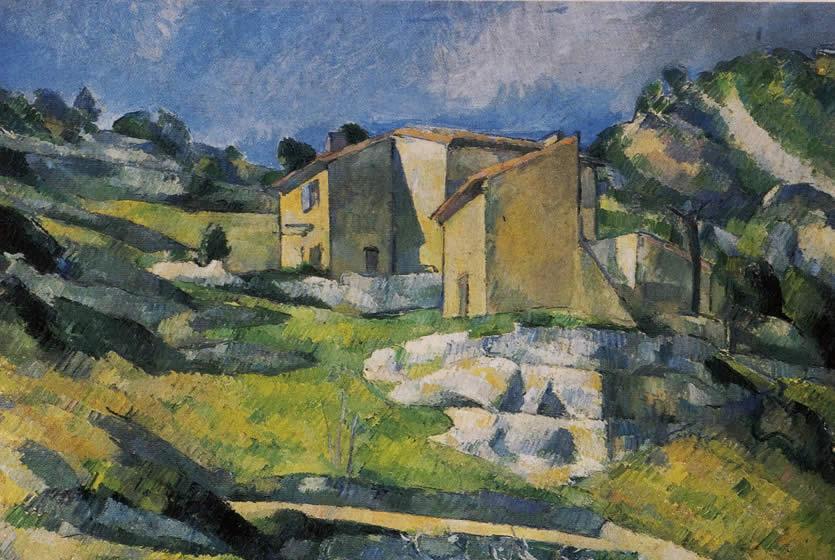
Cezanne, houses in Provence
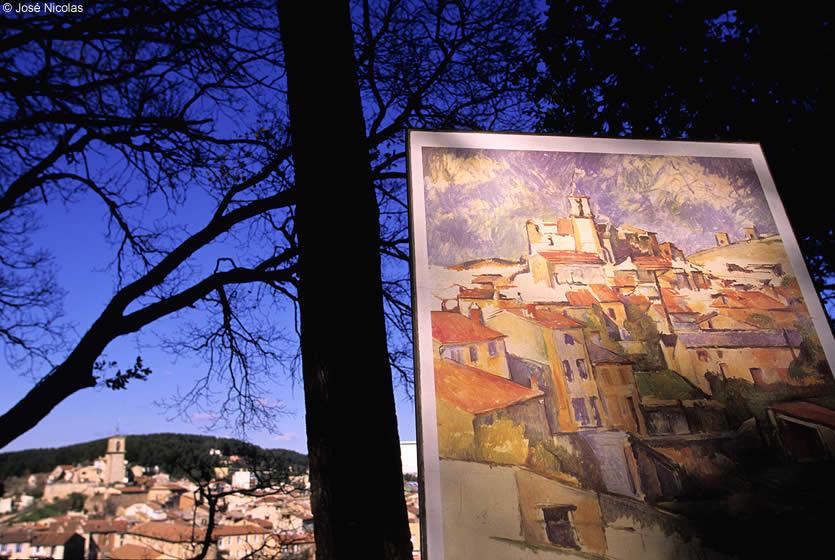
Gardanne, by Paul Cezanne
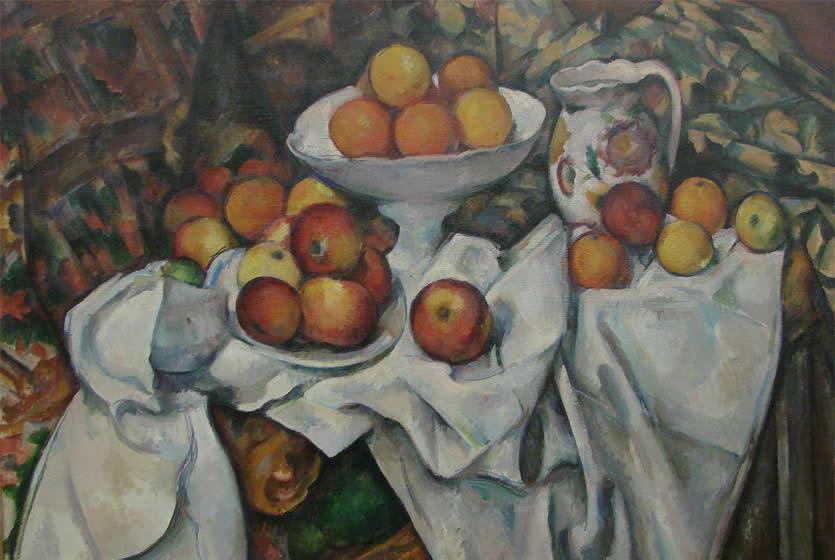
Cézanne, Still Life with Apples and Oranges, 1895-1900
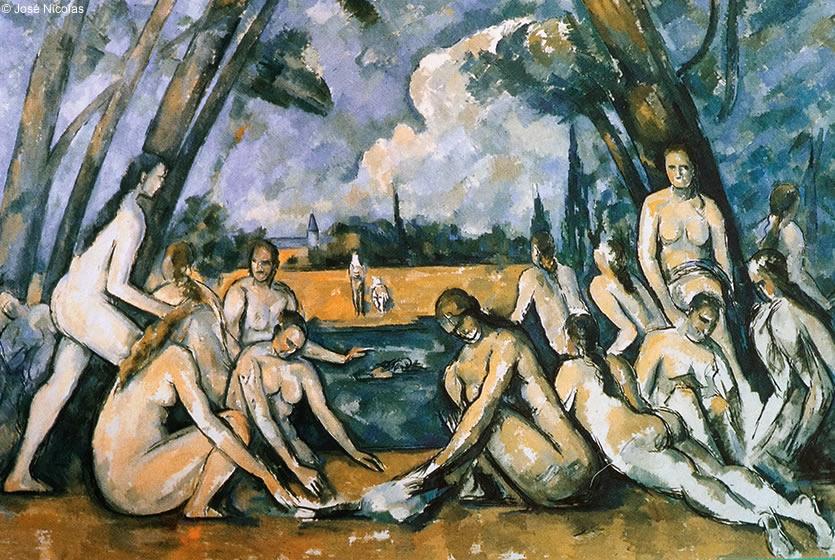
The Bathers by Paul Cézanne
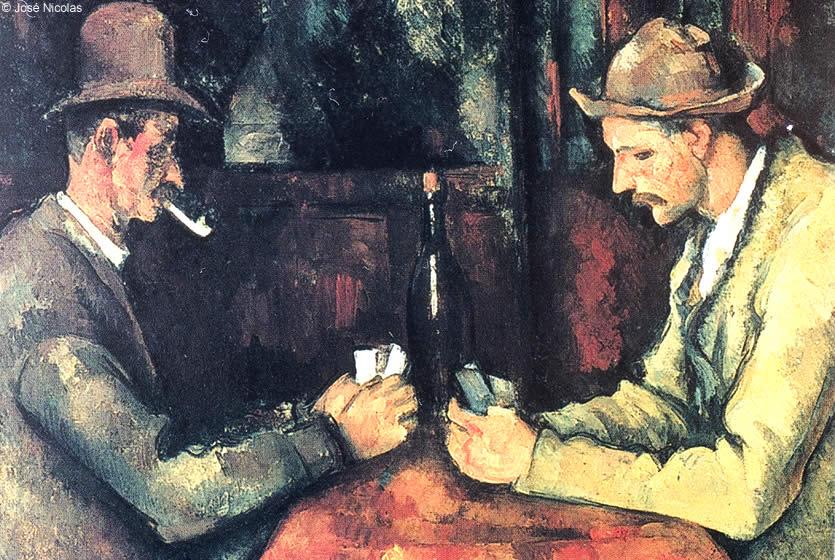
Paul Cezanne, The Card players- 1890 / 1895
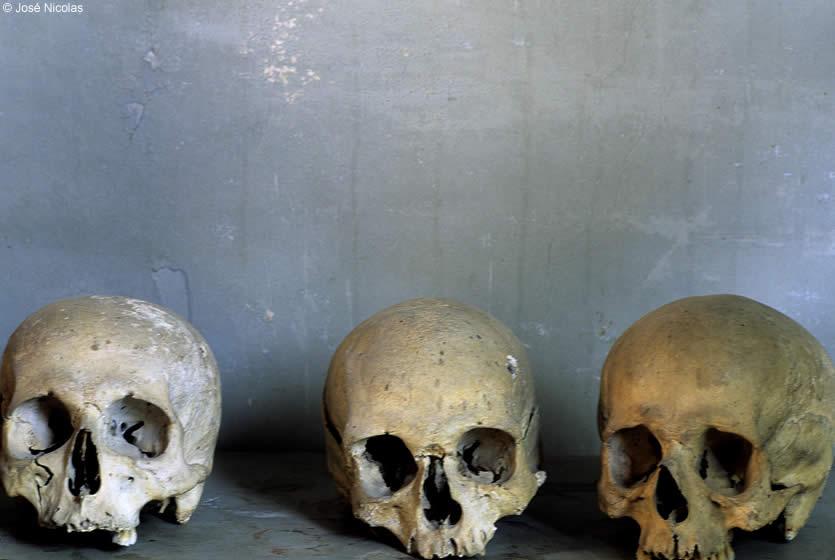
Three skulls - Atelier des Lauves in Aix en Provence
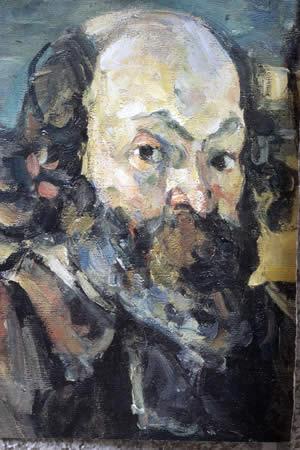
Up until the 1890s, Paul Cezanne exploited to the full his capacity stand back from the spectacle of the world. Experiencing an identity crisis, at the time when he described himself as "the man who doesn't exist, without individuality, as though dead", he carried out a series of Bathers, still lifes, portraits and self-portraits in which he fully flourishes. The characters in his paintings, the fruit and flowers of the still lifes, the nudes by the riverside, celebrate everything, without exception, with an unconcealed joy, the good fortune of being in the world.
In Paris, his paintings sell better and better, the painters of that century end up recognizing him and admire him as one of the greats. At the time when he himself blindly believed in the virtues of the effacement of the individual behind his creation, he became a painter of legend.
Other accommodations
Vacation rentalWhere to sleep?